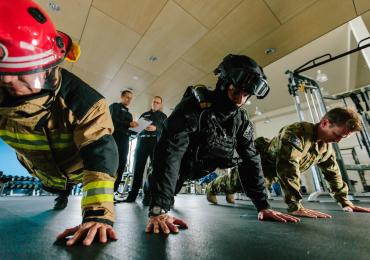
As I progressed through school, various teachers endeavoured to get us to write much neater and to not hunch over the desk with our nose on the page. I particularly remember my 4th grade teacher, Mrs Mulligan, who exhorted us to hold the pencil lightly, not with a fierce grip.
These lessons in holding a pencil have made an indelible impression on me. If I find myself leaning over the desk, then I sit up straight. If my hand is clenched around my pen, then I relax my hand.
Children today have access to a vast array of digital devices such as laptops, tablets and smartphones. There are reports that in 2013 75% of 0-8 year old American children had access to a mobile device1.
Should teachers and parents instruct children how to correctly use a digital device, just as my teachers instructed me how to correctly hold a pencil when I was a child?
There are guidelines for screen usage time by children.
The World Health Organisation (WHO) recommends no sedentary screen time for children younger than 2 years and less than 1 hour sedentary screen time per day for children 2- 4 years2.
Do children (and parents) comply with these guidelines?
Not according to a Canadian study published in 20193. This study showed that 79.4% of 2 year olds and 94.7% of 3 year olds exceed the WHO screen time guidelines.
Interestingly, the greatest predictor for children exceeding the WHO guidelines was maternal screen use3. Children copy the screen time patterns of their mum!
Children experience discomfort when using a digital device
Some of the reasons children experience discomfort when using a digital device include a mismatch between the size of furniture and the size of child4 (for example, a small child sitting on an adult size chair at the dinner table to use their laptop) and poor posture when using a computer 5.A recent publication in WORK describes how children aged 10-12 years reported pain after using a tablet device for only 15 minutes: this occurred when the tablet lay flat on the table or when the child balanced the tablet on their lap6. The authors recommend that children should use a table stand to increase their comfort.6
Vision is a big factor
Many of the awkward postures we adopt when using a digital device are driven by the location of the display relative to our eyes. For example, if the display is above head height then we will tip our head back to see it. If the display is to our left side, then we will turn our head to the left.
With this in mind, Long and Richter propose a simple strategy to help computer users set up their digital devices comfortably7:
- Straight. The display should be located directly in front of you so that your head is facing straight ahead.
- Down. The display should be located below eye height – but not too low that you have a pronounced head/neck flexed-forward posture.
- Big. Make the font size large enough so that you can hold the device at a comfortable distance from your eyes.
- Check. Ensure that everything is set up correctly, there is no reflected glare on the display, you are taking regular breaks, and that you and your eyes are comfortable.
A strategy like this could be easily communicated by teachers and parents to children when they are learning to use digital devices, just like my teachers instructed me how to hold a pencil. It could be called “visual ergonomics health literacy”.8
But such a strategy also requires teachers (and parents) know how to correctly use digital devices themselves so that they convey correct information to children.9
The challenge
Digital devices are here to stay. Teaching children how to comfortably use a digital device is a skill for life.
Are you up for the challenge to:
- Learn how to comfortably use a computer yourself and
- Teach this to the young ones in your life?
References
- Reid Chassiakos Y, et al (2016) AAP COUNCIL ON COMMUNICATIONS AND MEDIA. Children and Adolescents and Digital Media. Pediatrics. 138(5): e20162593 https://pediatrics.aappublications.org/content/early/2016/10/19/peds.2016-2593
- World Health Organisation. Guidelines on physical activity, sedentary behaviour and sleep for children under 5 years of age. https://www.who.int/publications-detail/guidelines-on-physical-activity-sedentary-behaviour-and-sleep-for-children-under-5-years-of-age
- Madigan S, et al (2019) Prevalence of pre-schoolers meeting vs exceeding screen time guidelines. JAMA Pediatrics 174(1): 93-85.
- Jacobs K and Baker NA (2002) The association between children’s computer use and musculoskeletal discomfort. Work. 18: 221-226
- Dockrell S, et al (2010) Computer-related posture and discomfort in primary school children: The effects of a school-based ergonomic intervention. Computers & Education 55: 276-284.
- Intolo P, et al (2019) Pain and muscle activity of neck, shoulder, upper back, and forearm during touch screen tablet use by children. Work. 64: 85-91.
- Long J and Richter H (2019) Visual ergonomics on-the-go. Work 63: 321-324.
- Long J and Richter H (2019) The pitfalls of the traditional office ergonomics model in the current mobile work environment: Is visual ergonomics health literacy the remedy? Work 63: 447-456.
- Legg S and Jacobs K (2008) Ergonomics for schools. Work 31: 489-493.



